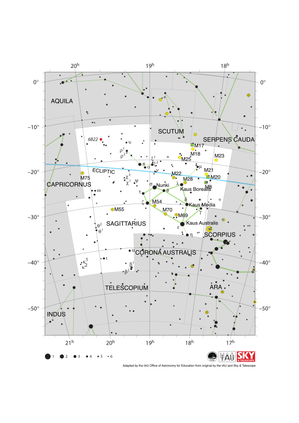Glossary term: Trou noir supermassif
Description: Comme leur nom l'indique, les trous noirs supermassifs (TNSM ou SMBH en anglais) constituent la plus grande catégorie de trous noirs, avec des masses allant de millions à des milliards de fois la masse du Soleil. Les données d'observation suggèrent que toutes les grandes galaxies semblent abriter un TNSM en leur centre. La Voie lactée en abrite un appelé Sagittarius A*, d'une masse d'environ 4,5 millions de fois celle du Soleil et d'un diamètre d'environ 40 millions de kilomètres. L'importance de la masse dans un petit volume fait que les trous noirs ont des champs gravitationnels immenses (puits de potentiel gravitationnel profond). Depuis 2019, les scientifiques utilisent les données d'un réseau de radiotélescopes situés dans le monde entier pour construire une image des horizons des événements autour des TNSM. Au début de l'année 2023, deux trous noirs supermassifs ont été imagés de cette manière : Sagittarius A* et le TNSM de 6,5 milliards de fois plus massif que le Soleil, au centre de la galaxie M87 et situé à un peu plus de 50 millions d'années-lumière.
Related Terms:
See this term in other languages
Term and definition status: The original definition of this term in English have been approved by a research astronomer and a teacher The translation of this term and its definition is still awaiting approval
The OAE Multilingual Glossary is a project of the IAU Office of Astronomy for Education (OAE) in collaboration with the IAU Office of Astronomy Outreach (OAO). The terms and definitions were chosen, written and reviewed by a collective effort from the OAE, the OAE Centers and Nodes, the OAE National Astronomy Education Coordinators (NAECs) and other volunteers. You can find a full list of credits here. All glossary terms and their definitions are released under a Creative Commons CC BY-4.0 license and should be credited to "IAU OAE".
If you notice a factual or translation error in this glossary term or definition then please get in touch.
Related Diagrams
Sagittarius Constellation Map
Credit: Adapted by the IAU Office of Astronomy for Education from the original by IAU/Sky & Telescope
License: CC-BY-4.0 Creative Commons Attribution 4.0 International (CC BY 4.0) icons
Virgo Constellation Map
Credit: Adapted by the IAU Office of Astronomy for Education from the original by IAU/Sky & Telescope
License: CC-BY-4.0 Creative Commons Attribution 4.0 International (CC BY 4.0) icons










